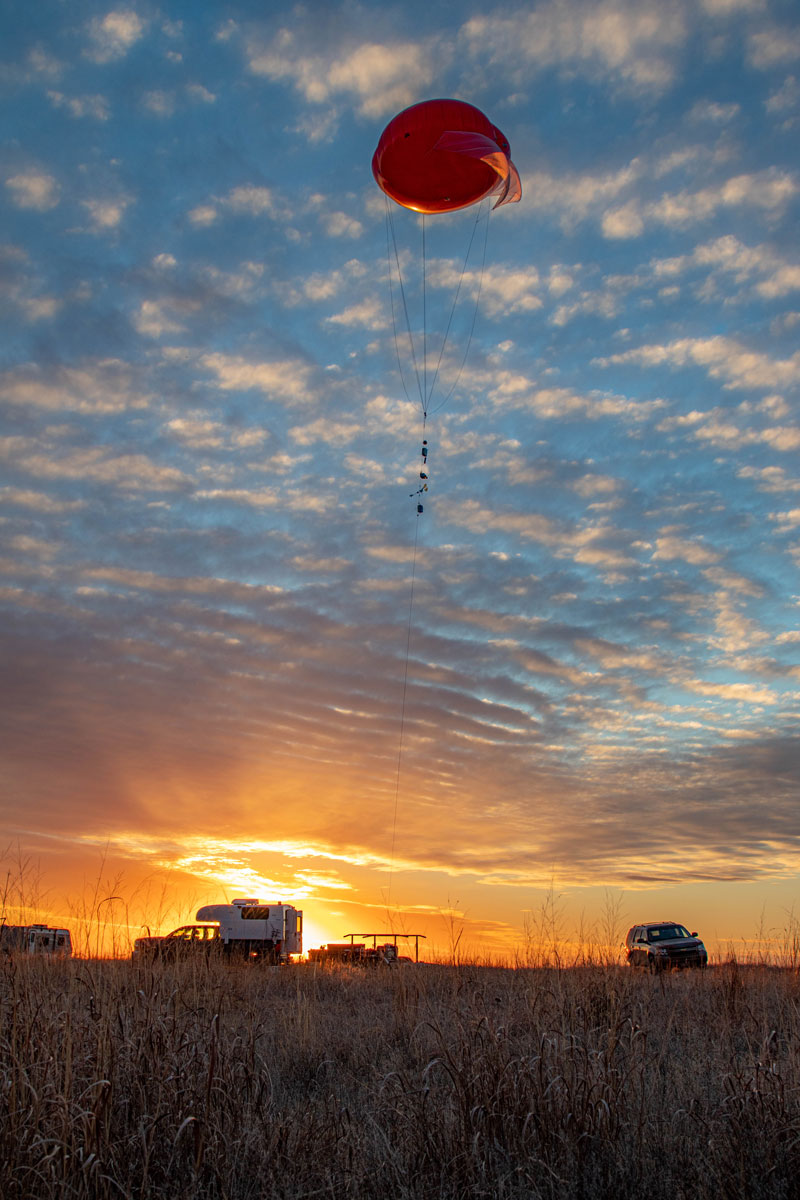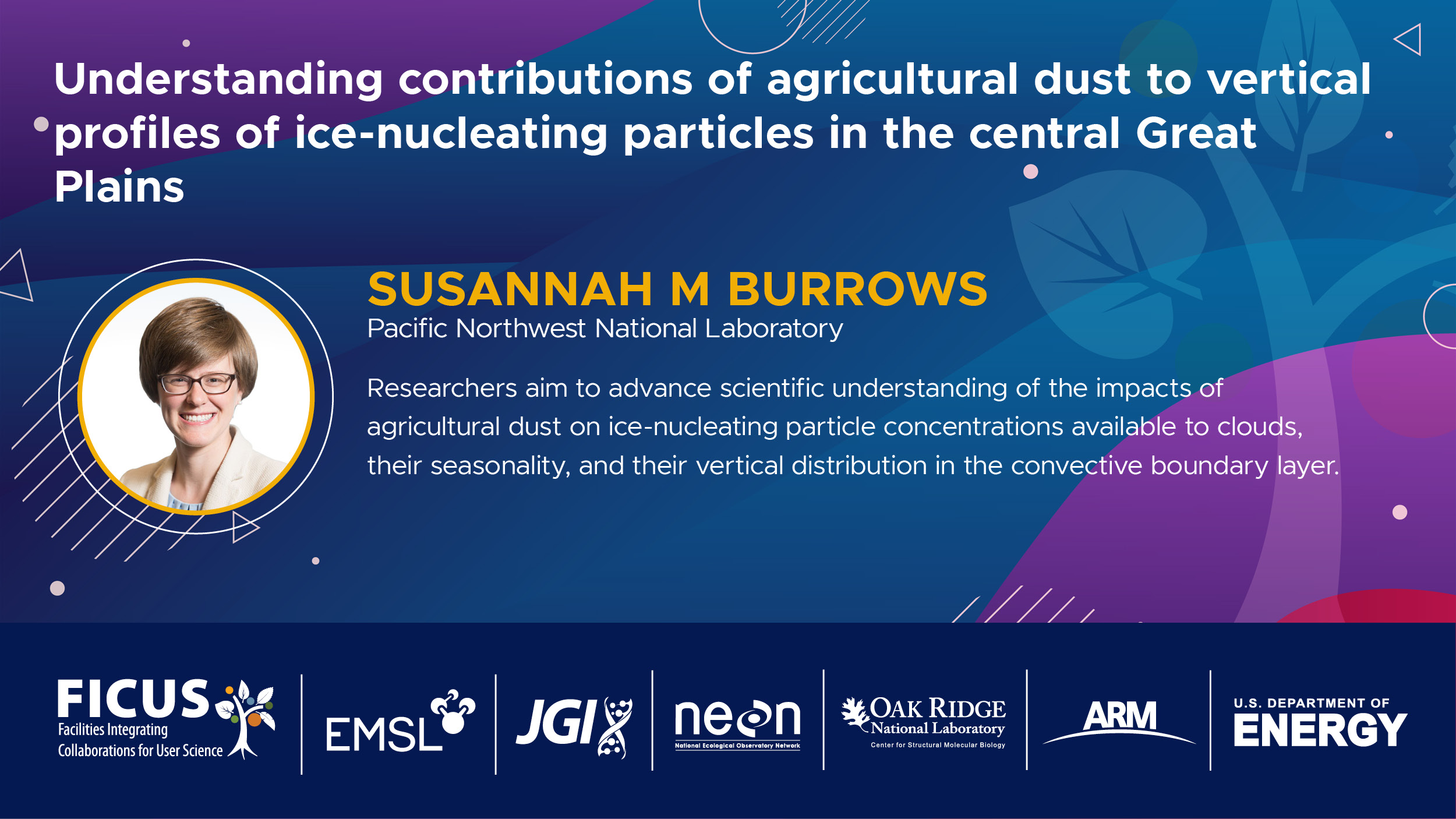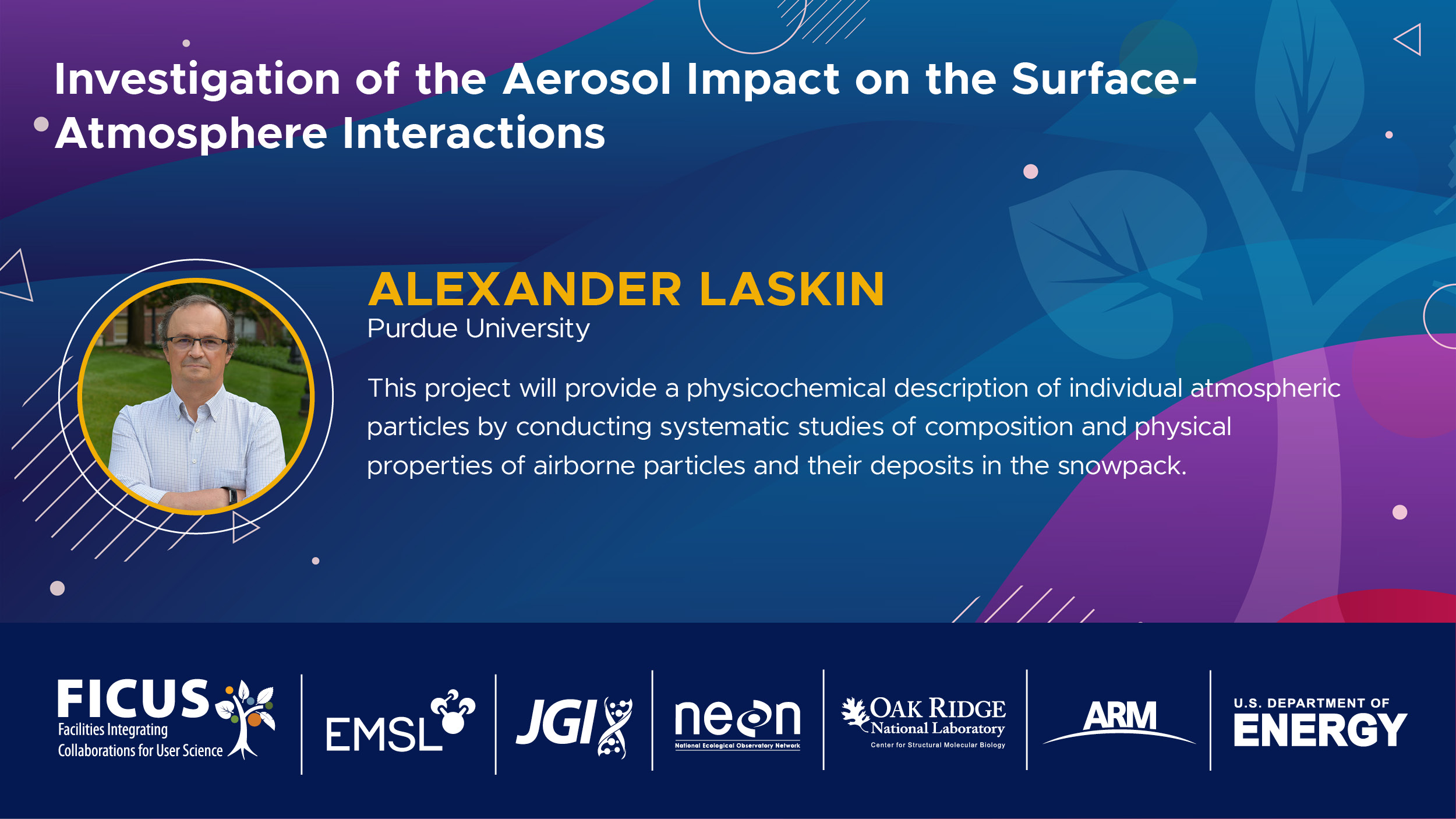Awardees Announced From ARM/EMSL User Facility Proposal Call
Published: 23 September 2021

Two projects received support through a recent proposal call integrating capabilities of the Atmospheric Radiation Measurement (ARM) user facility and Environmental Molecular Sciences Laboratory (EMSL).
In early 2021, ARM and EMSL—both U.S. Department of Energy Office of Science user facilities—sought collaborative research applications through the Facilities Integrating Collaborations for User Science (FICUS) program.
The FICUS program, established in 2014, enables ambitious research by providing access to specialized expertise and instrumentation from multiple user facilities.
The ARM/EMSL FICUS call for fiscal year 2022 (FY2022) solicited proposals related to aerosol processes and aerosol-cloud interactions. EMSL has developed a new size- and time-resolved automated aerosol sampler to fly as a guest instrument on ARM’s tethered balloon system (TBS).
In FY2022, the instrument will operate during TBS flights at ARM’s Southern Great Plains atmospheric observatory. The sampler will also fly as part of the Surface Atmosphere Integrated Field Laboratory (SAIL) campaign near Crested Butte, Colorado, and the TRacking Aerosol Convection interactions ExpeRiment (TRACER) near Houston, Texas.
The FICUS support will enable researchers to capture aerosols during ARM TBS flights and analyze the physical, chemical, optical, and microphysical properties of aerosol particles using multimodal microscopy, spectroscopy, and advanced mass spectrometry techniques at EMSL.
A brief introduction to the selected FY2022 FICUS projects and their lead scientists is below. Projects begin October 1, 2021.


In early 2022, watch for information about the FY2023 ARM/EMSL FICUS call.
Keep up with the Atmospheric Observer
Updates on ARM news, events, and opportunities delivered to your inbox
ARM User Profile
ARM welcomes users from all institutions and nations. A free ARM user account is needed to access ARM data.


















